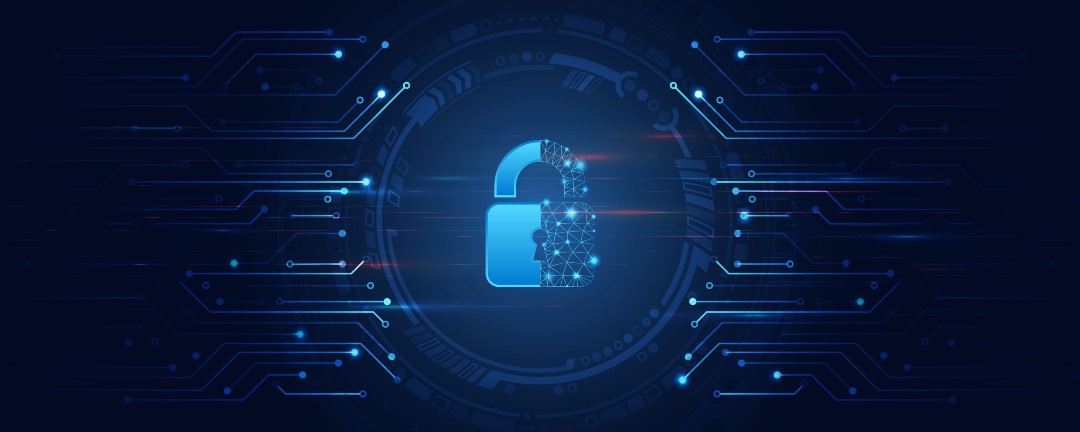Cyber-attacks keep growing in volumes and intensity. Cyber-crimes will cost enterprises globally a whopping $10.5 trillion annually by 2025, up from $3 trillion in 2015, with a CAGR of 15%. Accenture’s Cost of Cybercrime Study estimates that 43% of cyber-attacks affect small businesses. But only 14% of them can defend themselves.
IT teams deploy network monitoring tools to catch threats and preempt cyber attacks. But the high volume of data and the increasing complexity of the network subvert conventional deployments.
Artificial Intelligence (AI) provides fresh hope for enterprises to stay on top of cyber-attacks. But investing in AI just because everyone else is doing so will not help. Here are four approaches to use AI and threat intelligence the right way, for better cyber security.
1. Ensure Proactive Visibility and Alerts
Effective threat intelligence depends on the complete visibility of IT assets. Today’s enterprise networks have hundreds of endpoints. The increasing load from deployments, such as IoT, makes the network span wider. The vast attack surface emits billions of signals. A mid-sized company gets about 200,000 cyber events alerts daily, on average. Effective threat intelligence requires analysing these signals rapidly. But it is impossible for human agents or even conventional tools to monitor the ever-expanding network effectively, let alone start remedial action.
It becomes difficult to identify what enters and exits the network and the traffic that moves laterally. Gaps in visibility undo the hard work and fritter away the investment in setting up elaborate monitoring systems.
AI-powered threat intelligence software analyzes the network in-depth to unearth security holes. These tools:
- Monitor and analyze the traffic flow in real-time. Analytics identify deviations from established norms and unearth threats. For instance, AIOps tools monitor baseline traffic flow anomalies. Changes in flows indicate malware. Here are five steps to Transition from traditional ITOps to automated AIOps as the first step towards deploying AI-based cybersecurity measures.
- Collect unstructured data from disparate sources, connect the dots and offer deep insights. These tools identify zero-day exploits, risky behaviour, and a whole gamut of other threats. It also makes explicit the strength and weaknesses of the security deployments in place.
- Apply natural language processing, image recognition, and other techniques to speed up phishing detection and other threats
State-of-the-art products such as the Fortinet Security Fabric centralize visibility and device management. The cloud-based system, with infinite processing power, analyzes data on a massive scale, to assess risks in real-time. It works in the background to offer comprehensive protection across the attack surface. Special focus on sensitive systems, such as PoS channels, improves effectiveness.
2. Improve Resilience
Today’s networks are no longer static. It changes by the day. Changes in the business models and network configurations change the nature of threats faced by the enterprise as well. Adding capabilities, integrating networks, and other digital transformation initiatives change the threat profile. Side-by-side, hackers also change their approach. A security team may face a ransomware attack one day and a DDoS attack the next day. Human error and negligence compound the risk.
AI-based threat intelligence tools improve the resilience of enterprise cyber security.
These tools scan the network in real-time, and detect threats quickly. The latest tools go a step ahead, and:
- Enable autonomous networks. The earliest cognitive learning platforms consolidated knowledge. The latest tools apply AI-powered observations and analysis in real-time. It makes live vulnerability assessments and risk predictions. Early identification of gaps enables proactive fixes before a breach occurs.
- Offer context to the threats, to prioritize the response. The tool answers questions such as who is making the attack, their motivation, and their capabilities. Such improved insights help security teams make informed decisions about the countermeasures.
- Gather threat intelligence from the external environment. Specific insights on the threats surrounding the network ecosystem preempt phishing, payment frauds, typo-squatting, and other threats.
Fortinet’s software-defined wide-area network (SD-WAN) technology secures data flow over the public internet. This enables businesses to scale operations securely and deliver high performance without risks. It integrates security within the
headquarters and remote branches.

3. Stay Ahead of Third-Party Risk
A key thrust of today’s digital-first landscape is ending silos and ensuring the free flow of data. Such an approach unlocks value from the data and improves the competitiveness of the business. But it also raises security risks. The threat landscape extends beyond the enterprise network. It extends to partner systems, vendors, and other connected third parties.
Conventional third-party risk management practices, such as security certificate verifications, lack context. AI-based threat intelligence solutions offer:
- Transparency to the threat environments of the third parties.
- The context to evaluate relationships and validate the traffic based on them.
The Fortinet security fabric tool, powered by FortiOS integrated cybersecurity mesh platform, enables consistent security across the extended attack surface. It enables seamless interoperability and granular control for hybrid deployments, including hardware, software, and cloud services, across networks, endpoints, and clouds.
4. Enhanced Incident response
Knowing that threats exist is of little use without the capability to deal with them.
Conventional network security is reactive. The time to respond often took half a day or more. Powerful AI-based tools such as Fortinet make the response immediate. It delivers:
- Root cause analysis. AI-powered threat intelligence tools provide actionable threat intelligence. Network security can target the root cause of the vulnerability rather than treat the symptoms.
- Prescriptive analytics, such as insights into where breaches will take place, and how. The IT team may use such insights to allocate tools and resources to the critical areas. The enterprise becomes resilient to identify the emergent threats and takes prompt countermeasures.
- Proactive blocking. Unlike static analytics systems, AI-powered tools get better. As the algorithm deals with more data, it learns with experience and gets smarter. When artificial neural networks unearth a dangerous pattern, they store it in memory. The next time a similar pattern emerges, it blocks the traffic proactively.
- Seamless integration with existing security solutions. AI-based solutions integrate with the existing security deployments. The algorithms ally its intelligence to leverage the right tools to block distinct threats.
Artificial Intelligence augments the capabilities of cybersecurity teams. Used the right way, it enables powerful human-machine partnerships that become greater than the sum of the parts. Tools such as Fortinet enable such partnerships and improve cyber security in a big way.











